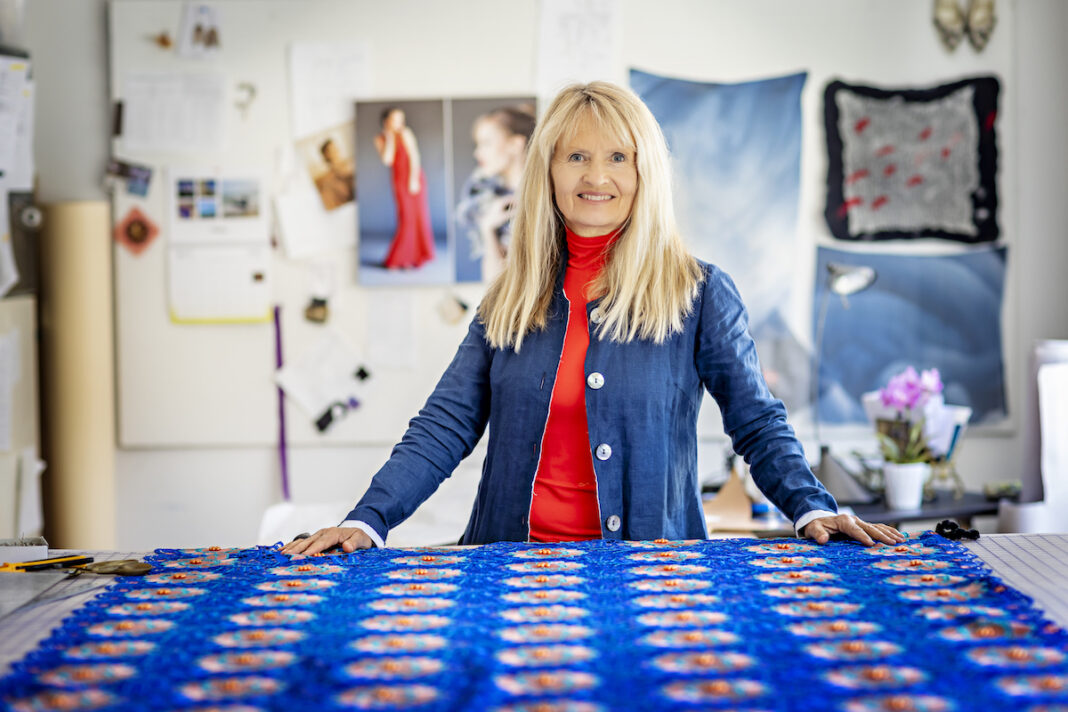Garments and principles to last a lifetime.
On a gloomy, rainy afternoon in May, I walked into Stina Sayre’s shop on Main Street in Vineyard Haven. Entering the bright, modern space feels like stepping into a fashion boutique for the future. The small, modest storefront is deceiving, as the space stretches far back from the bustling main street to include racks of garments, fitting rooms, and a workspace for making alterations. I was afraid I’d feel underdressed coming to interview Sayre about her work in the fashion industry, but I felt entirely at ease as we sat down on a small couch in the store to chat, since Sayre herself was comfortably dressed in light-washed denim jeans and a soft sweater of pastel wool.
“Growing up as a Swedish person, we have in our culture a very strong relation to nature. We’re not very ‘church’ religious, but we’re ‘nature’ religious.”
–Stina Sayre
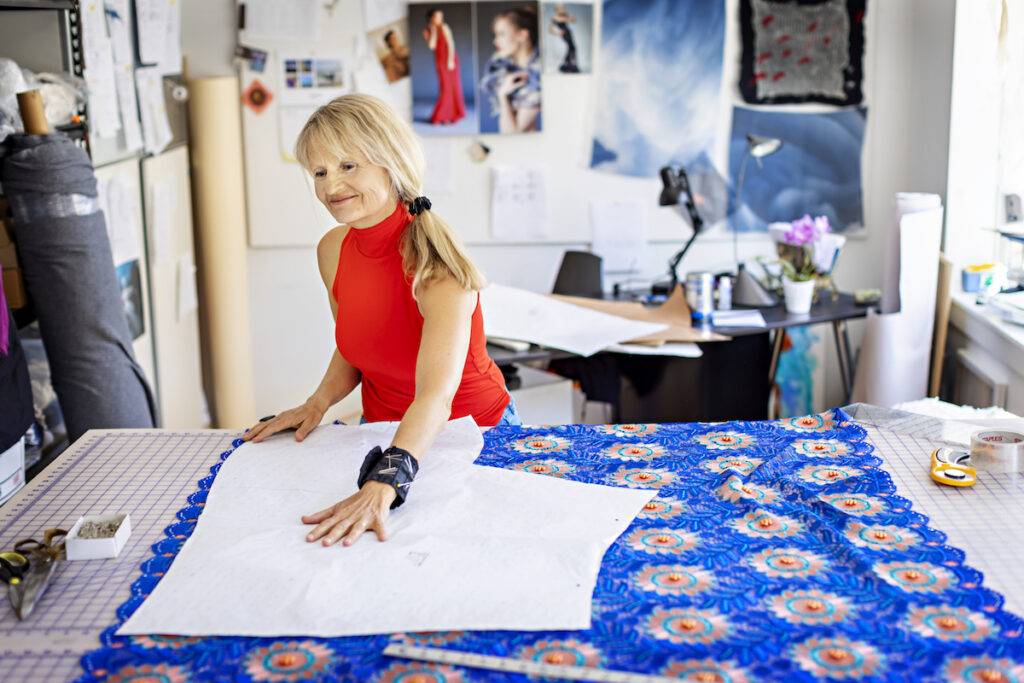
Sayre founded Stina Sayre Design in 1989 with the mission of crafting high quality clothing that empowers its wearers to live confidently. Sayre grew up in Sweden and worked in her family’s clothing stores before touring the world as a champion windsurfer. Her outdoorsy background influences her designs. “Growing up as a Swedish person, we have in our culture a very strong relation to nature,” says Sayre. “We’re not very ‘church’ religious, but we’re ‘nature’ religious.”
Materials & Waste
Sayre has always centered her design philosophy around valuing people, materials, and the planet. As the fashion industry and consumer expectations have shifted in the last few decades, fashion waste has increased globally. Fast fashion brands are producing twice the amount of clothes today as they were in 2000, dramatically increasing both pre- and post- production textile waste. Additionally, the number of times a garment is worn before being discarded has declined by nearly 36 percent in the last fifteen years. Calls for more sustainable practices at both the industry and consumer levels have made “sustainability” a marketable buzzword in the fashion business. “Sustainability is a big word,” Sayre says. “What are we sustaining? What are we buying? Why do we buy it?”
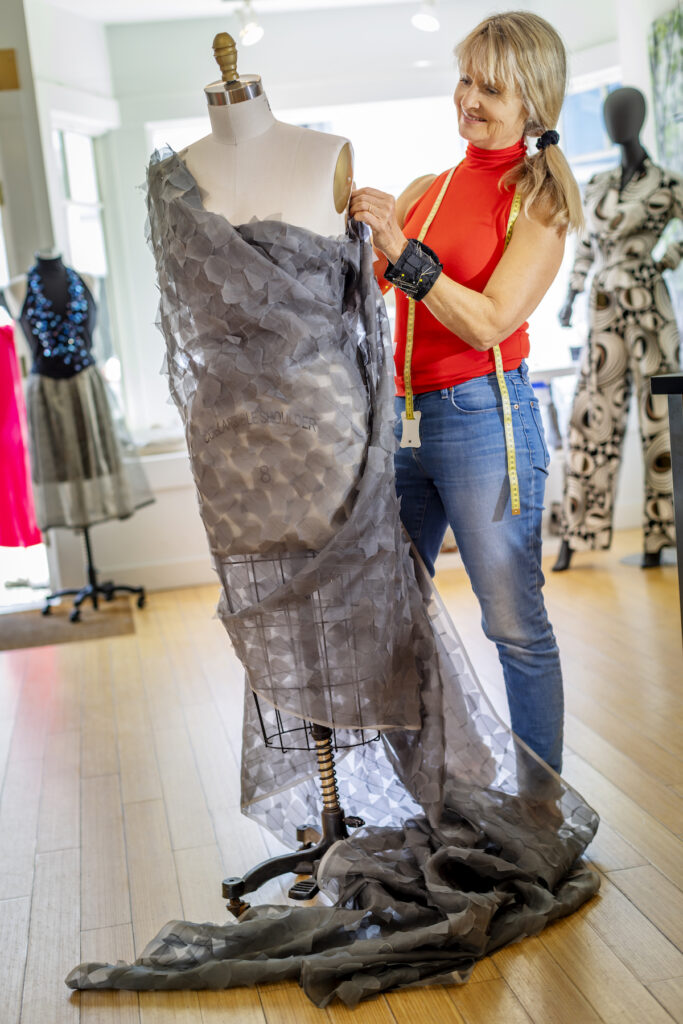
Sayre has always made sustainability and eco-conscious design priorities. Though she often grapples with the pros and cons of using various materials including cotton, linen, silk, wool, bamboo, and polyester, her goal is to create high quality garments that will last the wearer decades. “If it’s a good jacket, it’s a good jacket,” Sayre says. “Even if the fabric isn’t the perfect environmental fabric, at least you have something that you’re not throwing away every month because you get bored, or it falls apart. It’s sustainable just because you’re keeping it.”
To help ensure that customers wear and keep their garments, Sayre makes any necessary alterations before a customer leaves the store. “In fast fashion, you buy something and it doesn’t fit perfectly and now you don’t wear it,” says Sayre. “We don’t let you walk out of here like that because that’s the worst advertising. We alter it, and you walk out feeling amazing.”
As a designer, Sayre sometimes finds it challenging to source fabrics that are both best for the construction of a particular garment and best for the environment. While she prefers to use natural fibers as much as possible (and she notes that even these natural fibers have their own environmental considerations), some of her garments are made using polyester. Microplastics from polyester are shed into our water systems via washing machines. An estimated half a million tons of these contaminants reach the ocean each year. Whenever a customer purchases a garment made with polyester, Sayre tries to minimize its potential environmental harm by including a laundry bag designed to reduce the shedding of microplastics from synthetic fabrics, which also helps extend the life of the garment.
Sayre never throws away a garment. Customers can buy sample garments at marked-down prices, and even fabric scraps go to schools on the island to be used in art projects.
Even though in the grand scheme of the fashion industry Sayre’s production is relatively small, reducing waste is still a top priority: “If you’re small, you [might] feel like ‘well if I make ten jackets that’s not going to break the world, right?’ But if we all think like that, then it doesn’t really work.” Sayre never throws away a garment. Customers can buy sample garments at marked-down prices, and even fabric scraps go to schools on the island to be used in art projects.
The Social Politics of Sustainability
For Sayre, sustainability means more than reducing textile waste and sourcing quality fabrics. It also entails a commitment to ethical labor practices. Every garment by Stina Sayre Design is made in the state of Massachusetts by adult women who are making a living wage and choosing to sew. “This sustainability of people I think is really important to talk about,” Sayre says “How do we live? How do I want the people who work for me to live?”
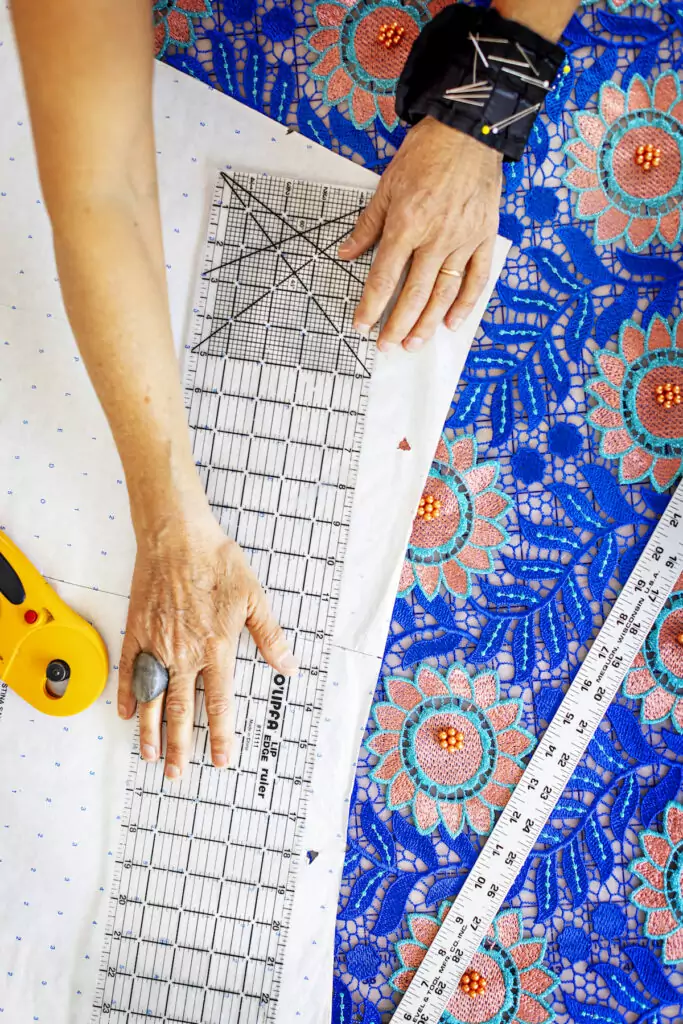
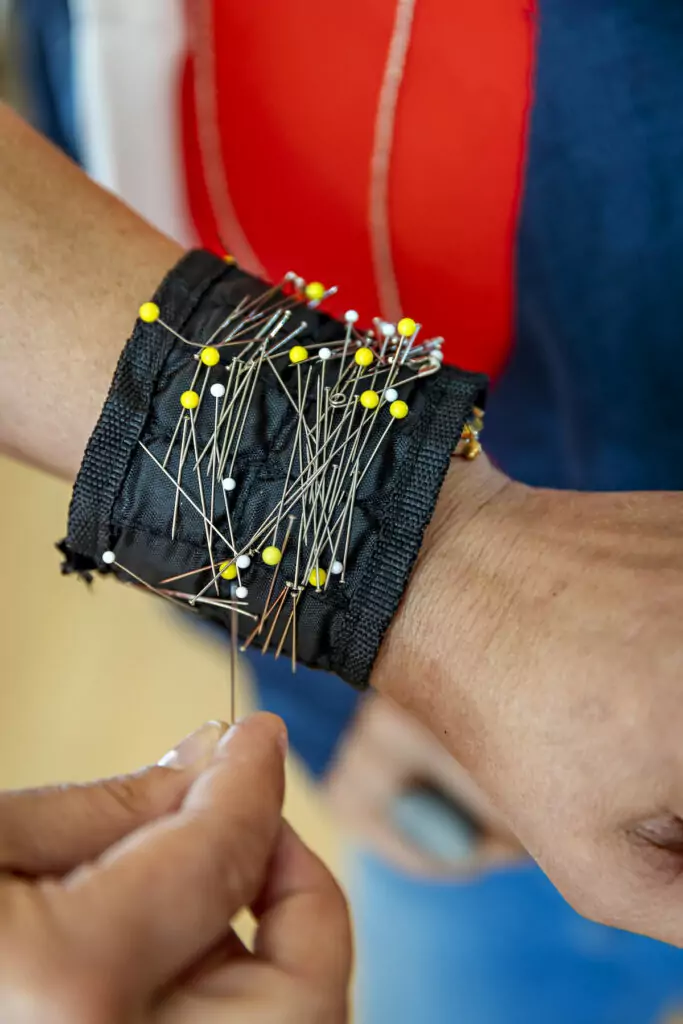
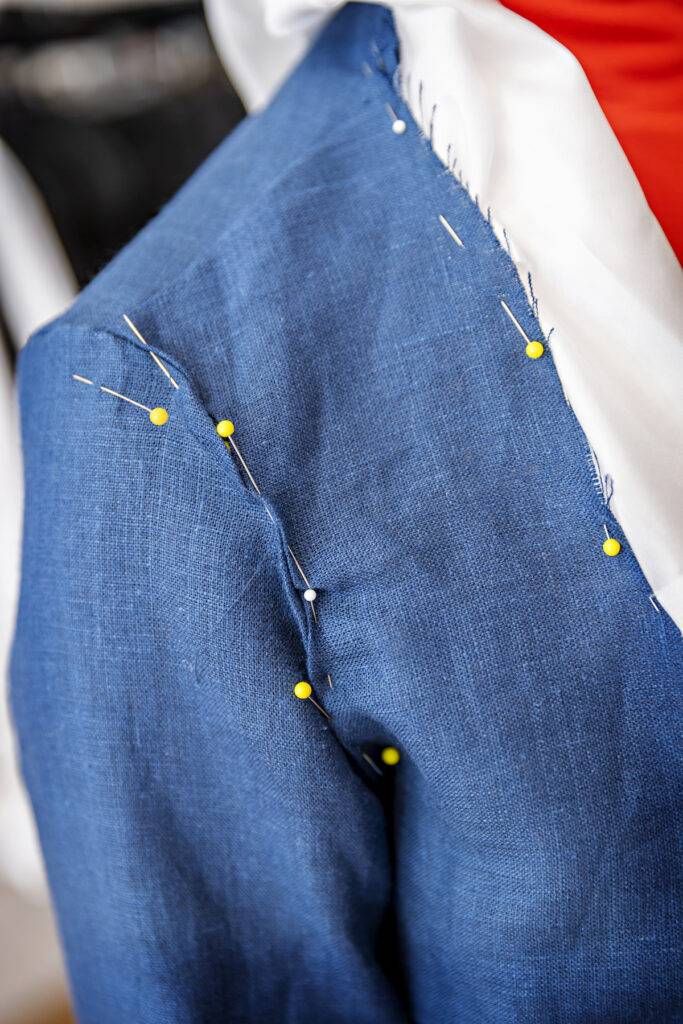
Sayre hopes that her customers are able to regain this connection through their experience with her clothing. “When you buy something here, you might be standing in line with the seamstress who made it,” Sayre says. “You belong to the community and we’re building something together.”
Often in the contemporary fashion economy, there can be a sense of disconnect between the consumer and the production of a garment; people don’t often think about the fact that clothing is constructed by real people with products that come from the earth. Sayre hopes that her customers are able to regain this connection through their experience with her clothing. “When you buy something here, you might be standing in line with the seamstress who made it,” Sayre says. “You belong to the community and we’re building something together.”
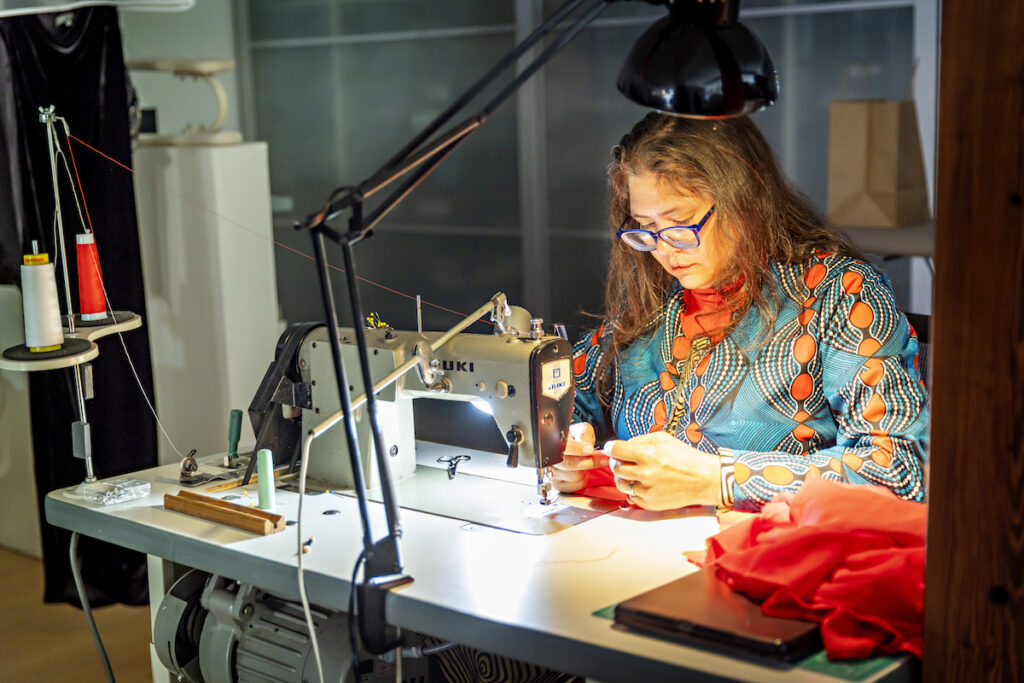
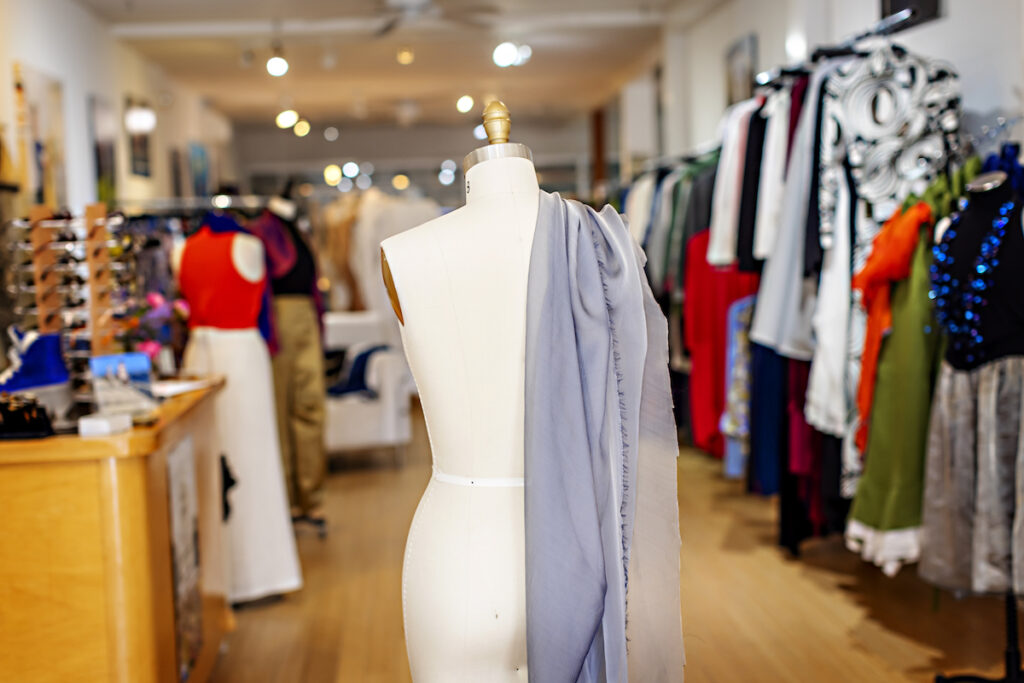
Sayre puts her activism in feminist movements at the forefront of her design philosophy and views women’s rights issues as necessarily entangled with issues of sustainability. “Sustaining ourselves and having power over ourselves is important,” Sayre says. “It’s about love and respect and creativity. There’s nothing more creative than love.”
What Can You Do?
Sayre recognizes that when it comes to fashion, consumers can easily feel overwhelmed. “What’s good, what’s bad, who’s lying to me, where’s the money going? It can become a lot,” she says. Here are her tips for where to start when building a sustainable wardrobe.
Shop secondhand: “You can always go to the thrift store. That’s a great place to start.”
Invest in quality construction and timeless designs: “If you want to buy something new, start with a coat or a jacket with a classic line. Don’t spend more to spend more, spend more because when you look at it you can tell that it’s well made, that it’s good materials, and it’s going to last. The design is such that you’re not going to feel awkward in it next year.”
Pay attention to care instructions: “Your clothes will last a lot longer if you don’t put them in the machine, because that agitation doesn’t happen when you wash by hand. Also the dyes start to fade in a weird way in the laundry because the cleaning agent is so strong. If you buy something nice, take care of it.”

